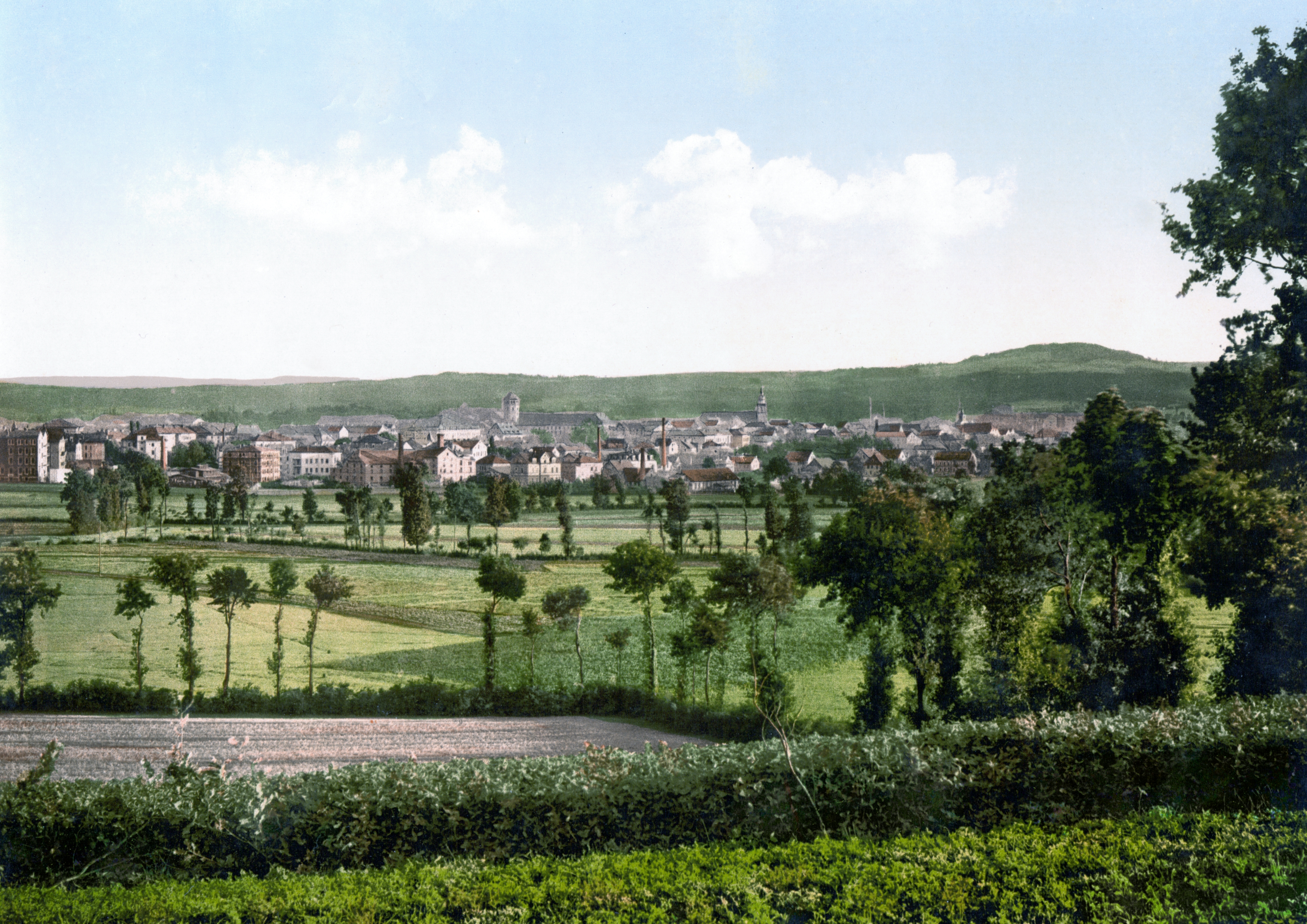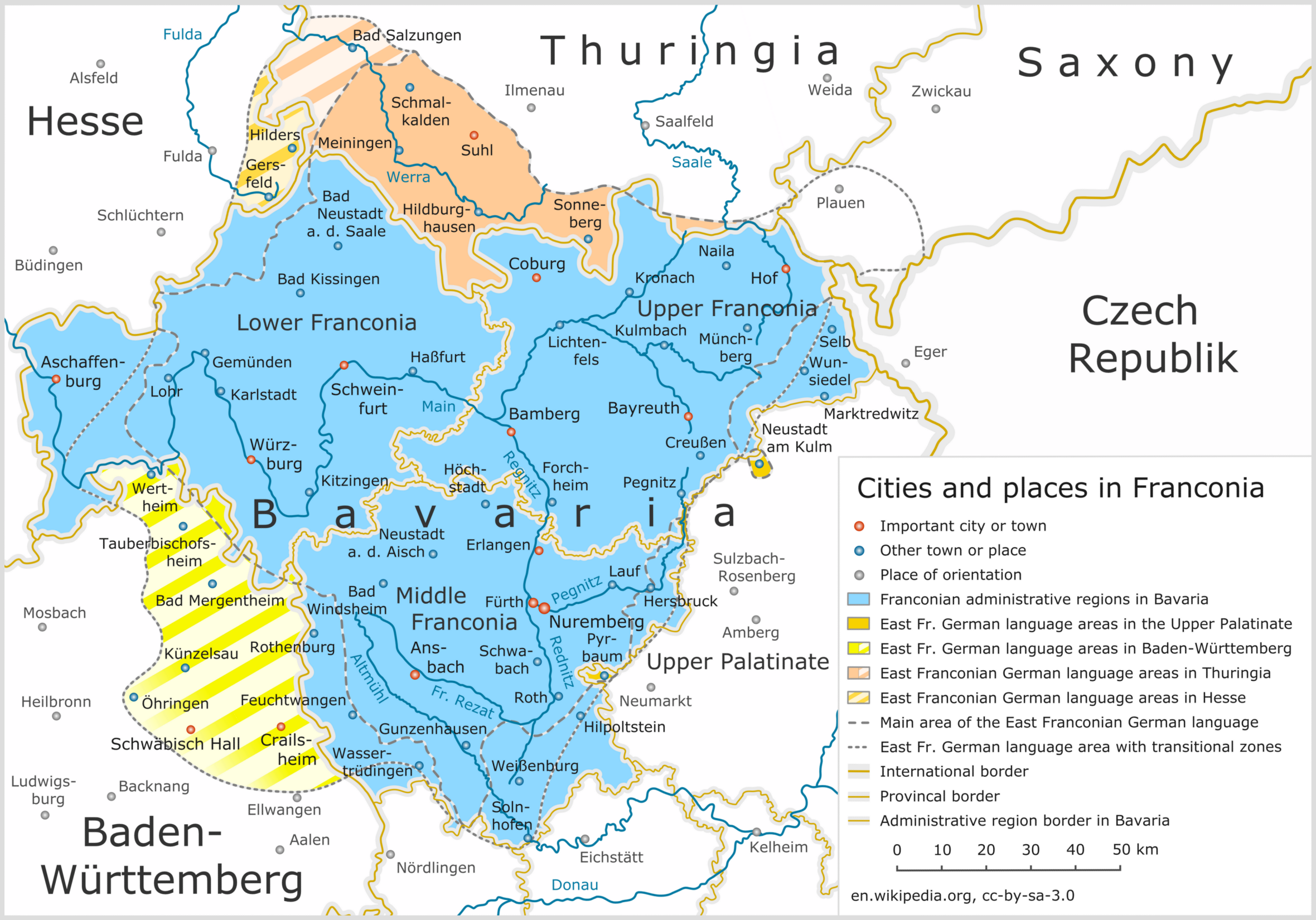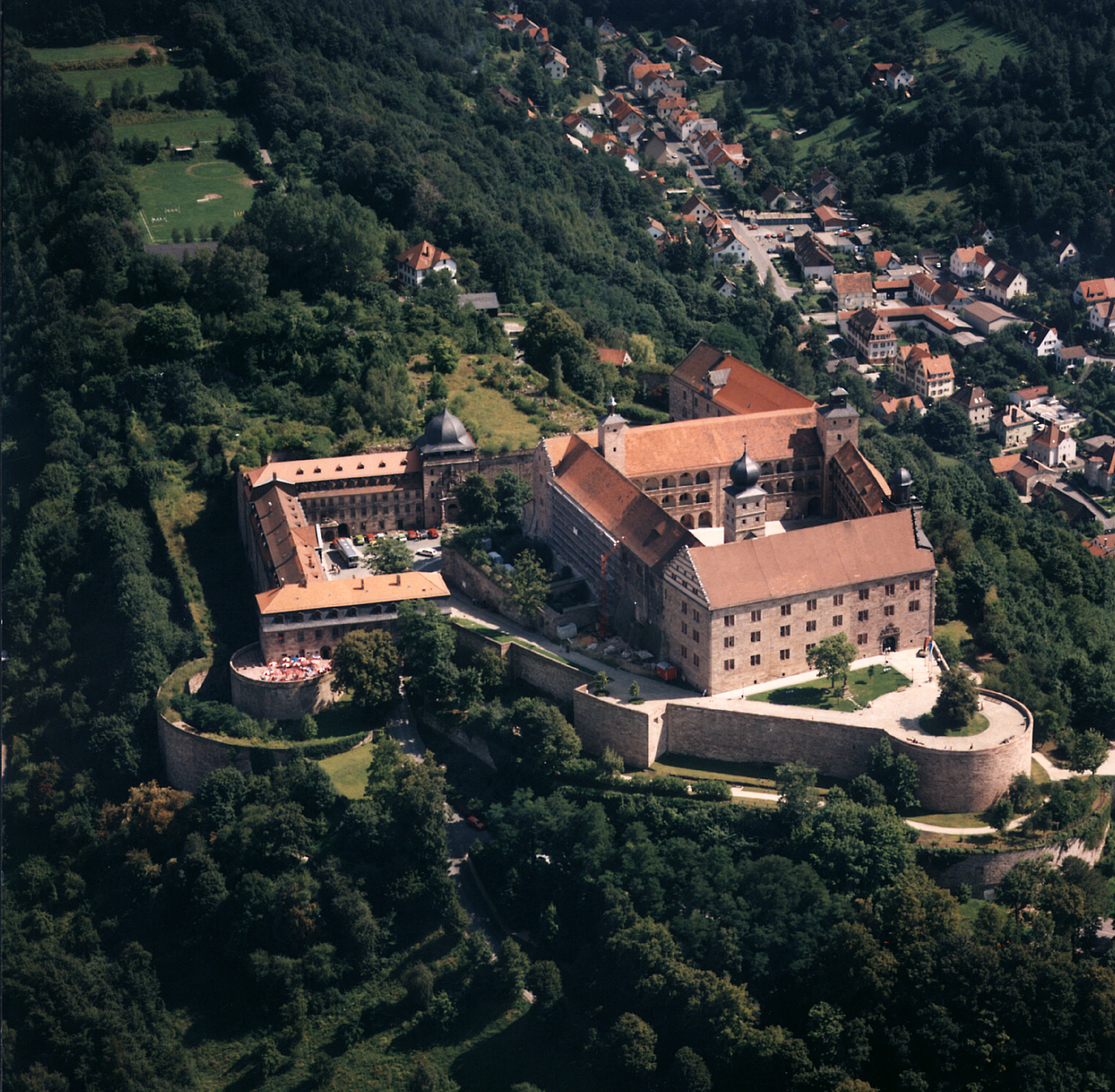|
River Main
The Main () is the longest tributary of the Rhine, one of the major European rivers. It rises as the White Main in the Fichtel Mountains of northeastern Bavaria and flows west through central Germany for to meet the Rhine below Rüsselsheim, Hesse. The cities of Mainz and Wiesbaden are close to the confluence. The largest cities on the Main are Frankfurt am Main, Offenbach am Main and Würzburg. It is the longest river lying entirely in Germany (if the Weser-Werra are considered separate). Geography The Main flows through the north and north-west of the state of Bavaria and then across southern Hesse; against the latter it demarcates a third state, Baden-Württemberg, east and west of Wertheim am Main, the northernmost town of that state. The upper end of its basin opposes that of the Danube where the watershed is recognised by natural biologists, sea salinity studies (and hydrology science more broadly) as the European Watershed. The Main begins near Kulmbach in Fran ... [...More Info...] [...Related Items...] OR: [Wikipedia] [Google] [Baidu] |
Würzburg
Würzburg (; Main-Franconian: ) is, after Nuremberg and Fürth, the Franconia#Towns and cities, third-largest city in Franconia located in the north of Bavaria. Würzburg is the administrative seat of the Regierungsbezirk Lower Franconia. It spans the banks of the Main (river), Main river. Würzburg is situated approximately 110 km west-northwest of Nuremberg and 120 km east-southeast of Frankfurt, Frankfurt am Main. The population as of 2019 is approximately 130,000 residents. Würzburg is famous for its partly rebuilt and reconstructed old town and its Würzburger Residenz, a palace that is a List of World Heritage Sites in Germany, UNESCO World Heritage Site. The regional dialect is East Franconian German. History Early and medieval history A Bronze Age Europe, Bronze Age (Urnfield culture) refuge castle, the Celtic Segodunum, and later a Roman Empire, Roman fort, stood on the hill known as the Leistenberg, the site of the present Fortress Marienberg. The ... [...More Info...] [...Related Items...] OR: [Wikipedia] [Google] [Baidu] |
States Of Germany
The Federal Republic of Germany is a federation and consists of sixteen partly sovereign ''states''. Of the sixteen states, thirteen are so-called area-states ('Flächenländer'); in these, below the level of the state government, there is a division into local authorities (counties and county-level cities) that have their own administration. Two states, Berlin and Hamburg, are city-states, in which there is no separation between state government and local administration. The state of Bremen (state), Bremen is a special case: the state consists of the cities of Bremen (city), Bremen, for which the state government also serves as the municipal administration, and Bremerhaven, which has its own local administration separate from the state government. It is therefore a mixture of a city-state and an area-state. Three states, Bavaria, Saxony, and Thuringia, use the appellation ("free state"); this title is merely stylistic and carries no legal or political significance (similar t ... [...More Info...] [...Related Items...] OR: [Wikipedia] [Google] [Baidu] |
Upper Rhine Plain
The Upper Rhine Plain, Rhine Rift Valley or Upper Rhine Graben ( German: ''Oberrheinische Tiefebene'', ''Oberrheinisches Tiefland'' or ''Oberrheingraben'', French: ''Vallée du Rhin'') is a major rift, about and on average , between Basel in the south and the cities of Frankfurt/Wiesbaden in the north. Its southern section straddles the France–Germany border. It forms part of the European Cenozoic Rift System, which extends across Central Europe. The Upper Rhine Graben formed during the Oligocene, as a response to the evolution of the Alps to the south. It remains active to the present day. Today, the Rhine Rift Valley forms a downfaulted trough through which the river Rhine flows. Formation The Upper Rhine Plain was formed during the Early Cenozoic era, during the Late Eocene epoch. At this time, the Alpine Orogeny, the major mountain building event that was to produce the Alps, was in its early stages. The Alps were formed because the continents of Europe and Africa coll ... [...More Info...] [...Related Items...] OR: [Wikipedia] [Google] [Baidu] |
Hanau-Seligenstadt Basin
The Hanau-Seligenstadt Basin is a subbasin of the Upper Rhine Graben southeast of Frankfurt am Main (Hesse, Bavaria, Germany). Location The Hanau-Seligenstadt Basin is located in the eastern part of the Lower Main lowlands. The river Main (river), Main crosses the basin between Aschaffenburg and Offenbach am Main. The largest cities of the area are Hanau, Seligenstadt and Dieburg. Geologic setting The Hanau-Seligenstadt Basin is a Cenozoic graben. As a subbasin of the Upper Rhine Graben it belongs to the European Cenozoic Rift System, a fracture zone crossing Europe from the North Sea to the Mediterranean. The Hanau-Seligenstadt Basin is separated from the Upper Rhine Graben to the west by a Horst (geology), horst block. The Spessart mountains form its eastern margin. To the south it is bounded by the Odenwald mountains. Towards the north the graben margins converge. The basin sediments rest on top of the Variscan Orogeny, Variscan basement and Permian to Triassic rocks. ... [...More Info...] [...Related Items...] OR: [Wikipedia] [Google] [Baidu] |
Bayreuth
Bayreuth ( or ; High Franconian German, Upper Franconian: Bareid, ) is a Town#Germany, town in northern Bavaria, Germany, on the Red Main river in a valley between the Franconian Jura and the Fichtel Mountains. The town's roots date back to 1194. In the 21st century, it is the capital of Upper Franconia and has a population of 72,148 (2015). It hosts the annual Bayreuth Festival, at which performances of operas by the 19th-century German composer Richard Wagner are presented. History Middle Ages and Early Modern Period The town is believed to have been founded by the counts of County of Andechs, Andechs probably around the mid-12th century,Mayer, Bernd and Rückel, Gert (2009). ''Bayreuth – Tours on Foot'', Heinrichs-Verlag, Bamberg, p.5, . but was first mentioned in 1194 as ''Baierrute'' in a document by Bishop Otto VI of Andechs, Otto II of Bishopric of Bamberg, Bamberg. The syllable ''-rute'' may mean ''Rodung'' or "clearing", whilst ''Baier-'' indicates immigrants from ... [...More Info...] [...Related Items...] OR: [Wikipedia] [Google] [Baidu] |
Franconian Jura
The Franconian Jura ( , , or ) is an upland in Franconia, Bavaria, Germany. Located between two rivers, the Danube in the south and the Main in the north, its peaks reach elevations of up to and it has an area of some 7053.8 km2. Emil Meynen, Josef Schmithüsen: '' Handbuch der naturräumlichen Gliederung Deutschlands.'' Bundesanstalt für Landeskunde, Remagen/Bad Godesberg 1953–1962 (9 editions in 8 volumes, updated map 1:1,000,000 scale with major units, 1960). It is part of the Table Jura (). Large portions of the Franconian Jura are part of the Altmühl Valley Nature Park. The scenic meanders and gorges formed by the river Altmühl draw tourists to visit the region. Geologically, the Franconian Jura is the eastern continuation of the Swabian Jura. The mountain chains are separated from each other by the impact crater of the Nördlinger Ries. The northern part of the Franconian Jura is known as Franconian Switzerland Franconian Switzerland (, ) is an upland ... [...More Info...] [...Related Items...] OR: [Wikipedia] [Google] [Baidu] |
Red Main
The Red Main ( or ''Rotmain'') is a river in southern Germany. It is the southern, left headstream of the river Main (river), Main. It rises in the hills of Franconian Switzerland, near Haag, Upper Franconia, Haag and flows generally northwest through the towns Creußen, Bayreuth, Heinersreuth and Neudrossenfeld. It merges with the White Main near Kulmbach to form the Main. The Red Main is long and descends a total of . The waters of the Red Main flow through a region of clayey soils, which is why the river carries a lot of suspended solids, especially after rainfall, and acquires a red-brown colour, hence the name ''Red'' Main. Sources The Red Main rises south of Bayreuth near Hörlasreuth (Creußen) in the Lindenhardt Forest at a height of . The Red Main Spring, source of the Red Main (''Rotmainquelle'') was impounded in stone in 1907, the water flows out of a small wooden pipe. Its source region lies in the Franconian Switzerland-Veldenstein Forest Nature Park. Geologi ... [...More Info...] [...Related Items...] OR: [Wikipedia] [Google] [Baidu] |
Franconia
Franconia ( ; ; ) is a geographical region of Germany, characterised by its culture and East Franconian dialect (). Franconia is made up of the three (governmental districts) of Lower Franconia, Lower, Middle Franconia, Middle and Upper Franconia in Bavaria, the adjacent, East Franconian, Franconian-speaking South Thuringia, south of the Thuringian Forest—which constitutes the language boundary between Franconian and Thuringian—and the eastern parts of Heilbronn-Franconia in Baden-Württemberg. Those parts of the Vogtland lying in Saxony (largest city: Plauen) are sometimes regarded as Franconian as well, because the Vogtlandian dialects are mostly East Franconian. The inhabitants of Saxon Vogtland, however, mostly do not consider themselves Franconian. On the other hand, the inhabitants of the Hessian dialect, Hessian-speaking parts of Lower Franconia west of the Spessart (largest city: Aschaffenburg) do consider themselves Franconian, although not speaking the dialect. He ... [...More Info...] [...Related Items...] OR: [Wikipedia] [Google] [Baidu] |
Kulmbach
Kulmbach () is the capital of the district of Kulmbach in Bavaria in Germany. The town, once a stronghold of the Principality of Bayreuth, is renowned for its University of Life Sciences, a branch of the University of Bayreuth, the massive Plassenburg Castle, which houses the largest tin soldier museum in the world, for its brewery, its vivid food industry, which hosts some of the world's biggest food businesses, and for its sausages, or '' Bratwürste''. Geography Location Kulmbach is located in the middle of the Bavarian province of Upper Franconia, about northwest of the city of Bayreuth. To the south of Kulmbach, the River Main begins at the confluence of its headstreams, the White Main and Red Main. Town districts Kulmbach is divided into the following districts (with population in brackets): History From about 900 AD there was a small settlement in what is now the district of Spiegel, which consisted of a forest lodge and a fortified tenant farm (''Fronhof'') to ... [...More Info...] [...Related Items...] OR: [Wikipedia] [Google] [Baidu] |
Danube
The Danube ( ; see also #Names and etymology, other names) is the List of rivers of Europe#Longest rivers, second-longest river in Europe, after the Volga in Russia. It flows through Central and Southeastern Europe, from the Black Forest south into the Black Sea. A large and historically important river, it was once a frontier of the Roman Empire. In the 21st century, it connects ten European countries, running through their territories or marking a border. Originating in Germany, the Danube flows southeast for , passing through or bordering Austria, Slovakia, Hungary, Croatia, Serbia, Romania, Bulgaria, Moldova, and Ukraine. Among the many List of cities and towns on the river Danube, cities on the river are four national capitals: Vienna, Bratislava, Budapest, and Belgrade. Its drainage basin amounts to and extends into nine more countries. The Danube's longest headstream, the Breg (river), Breg, rises in Furtwangen im Schwarzwald, while the river carries its name from its ... [...More Info...] [...Related Items...] OR: [Wikipedia] [Google] [Baidu] |







